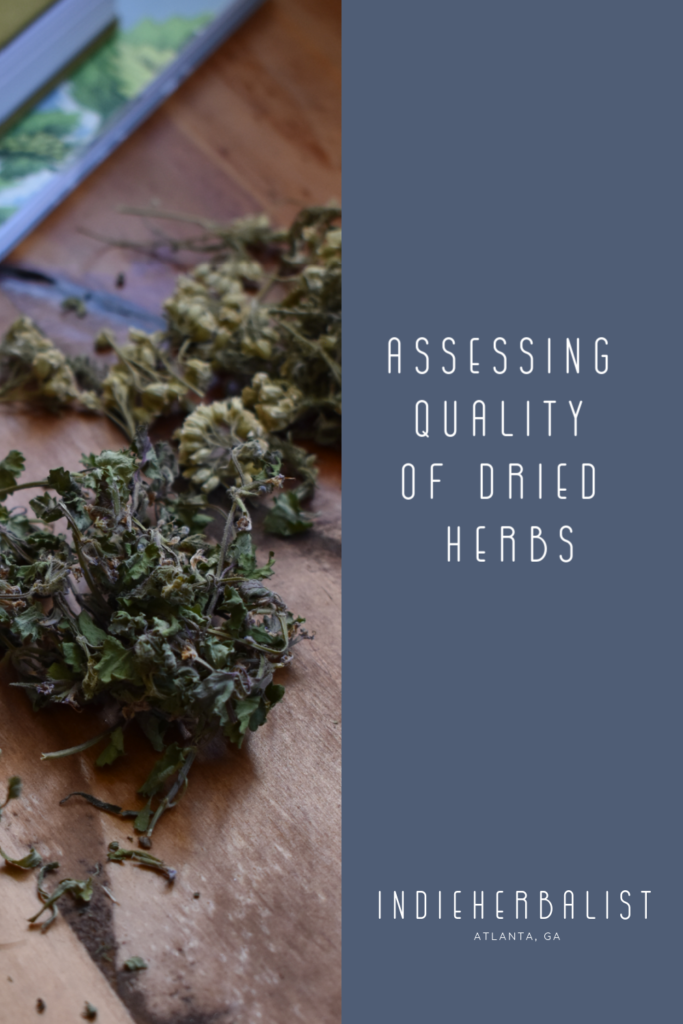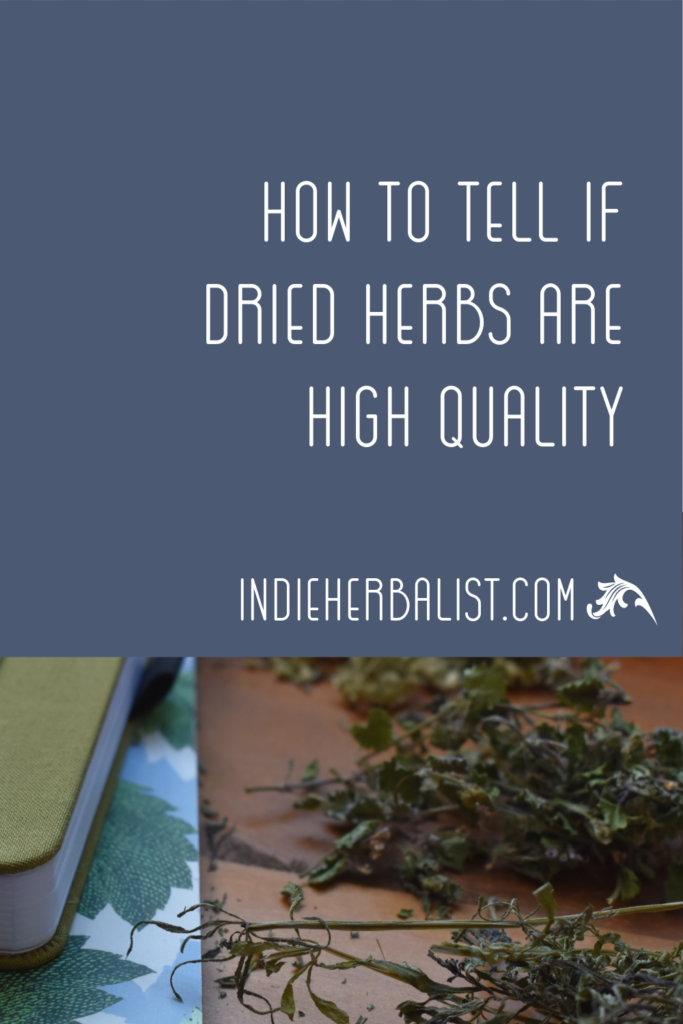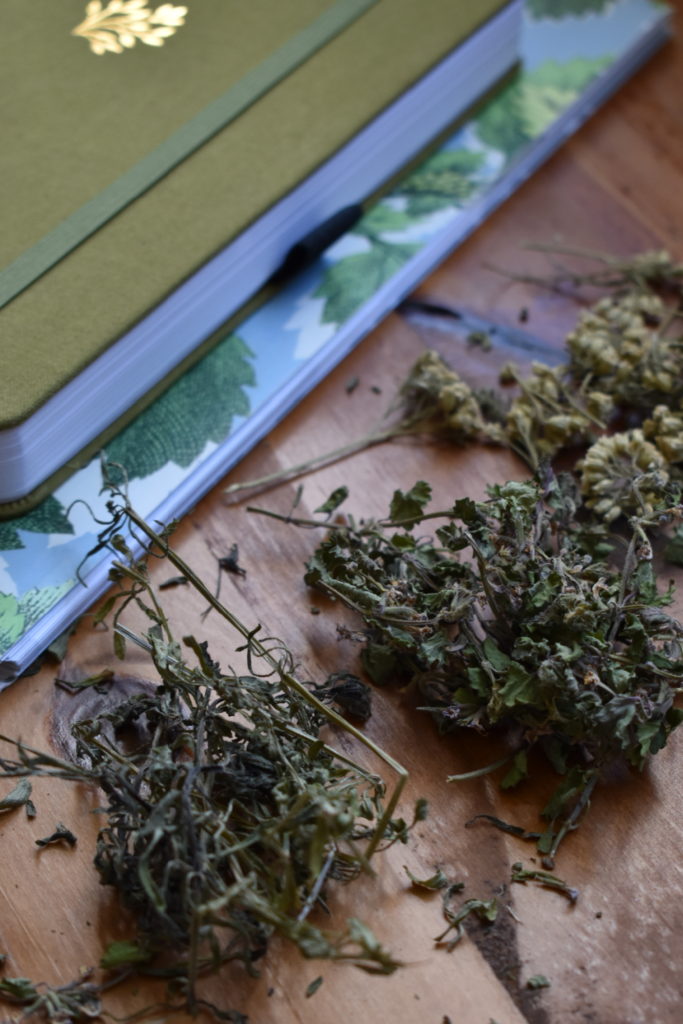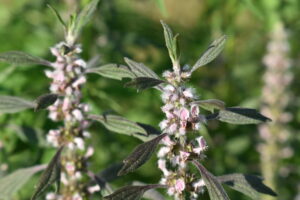Links contained in this post and elsewhere on my website may include affiliate links. When you make a purchase through these links, I earn a commission at no additional cost to you. I only link to products and services that I love - and that I think you will love, too!
Learning to judge the quality of dried herbs can be tricky. It’s a skill that’s built with experience. Growing your own herbs and drying them at home are the best ways to ensure they are of high quality.
Even when I purchase from some of the best herbal suppliers, I’m sometimes disappointed with the freshness of what I receive. It just goes to show that it’s important to be able to judge the quality of dried herbs for yourself. That way you can better gauge the potency of the plant material you are working with.
Herbs quickly lose potency when exposed to light, heat, and moisture. Even under the best storage conditions, they will start to become less vibrant over time. There are three ways to tell if your dried herbs make the cut: color, fragrance, and texture.
Colorful leaves and flowers
The quality of dried herbs is easily assessed at a glance. High-quality herbs have vibrant colors. Some herbs seem to be more likely than others to fade during the commercial drying process. I’ve noticed that calendula, plantain, and cleavers are especially vulnerable.
Calendula petals can range through different shades of orange based on the variety grown, but it should always be distinctly orange. If you can, it’s also a good idea to order whole calendula flowers. Much of calendula’s goodness is in the resin on the back of the blossom. You’re losing out if you only use the petals!
As another example, I know that some herbalists swear off using dried plantain or dried cleavers, but I think the problem may actually be the way the plants are dried and stored.
Here’s an illustration of how my own dried cleavers looks vs cleavers I purchased. I think this is a great example of an herb that is extremely susceptible to loss of viability while being processed. The extra care cleavers can receive at home makes a huge, very visible, difference.
Distinct Fragrances
Dried herbs lose their characteristic fragrances over time just like the spices in your kitchen cabinet. It takes a little practice to become familiar with how an herb should smell, but if everything in your home apothecary smells identical, you can be confident most of the goodness is gone.
Another potential problem with dried herbs is mold. If you are familiar with determining hay quality by taking a good sniff, you can apply your skills to herbs. A peppery or musty smell in your herbs can mean trouble, just like in hay.
Crisp Texture

There are a few herbs that will feel soft and fluffy when they dry. Raspberry leaf and mullein leaf come to mind. However, most herbs should feel nice and crisp. Leaves should crumble easily. Petals should feel paper-dry or crumble (depending on the plant). Roots generally shouldn’t feel dusty or powdery (a sign that mold might be present) and you shouldn’t be able to dent most roots easily with your fingernail. Soft roots may be a sign that not enough moisture was removed during drying.
High-Quality Dried Herbs at Home
Knowing how to judge the quality of dried herbs is useful when managing your herbal supplies at home. It becomes obvious when your supplies are still vital and fresh, and when it might be best to spread them in the garden or add them to the compost.
If you notice a loss of color and fragrance when you dry your own herbs, you should reconsider your arrangements. Evaluate your drying techniques and make sure you are keeping your herbs in the dark, away from high temperatures and moisture during the drying process.
For best results, a low-temperature food dehydrator is a great option. Another good arrangement is on screens or trays in a spare room indoors. Try using light-blocking curtains in the room where your herbs dry and adding a dehumidifier or fan to keep air circulating and remove moisture.
How to store dried herbs
You’ve made sure you have high-quality dried herbs, so how do you keep them that way? The Herbal Academy has an excellent article on how best to store dried herbs. Read their 6 Tips for Storing Dried Herbs to learn more (and check out some of their fantastic, affordable herbalism courses).
Did you know that I prefer using dried herbs? Not convinced? Here are three reasons to use dried herbs instead of fresh!





